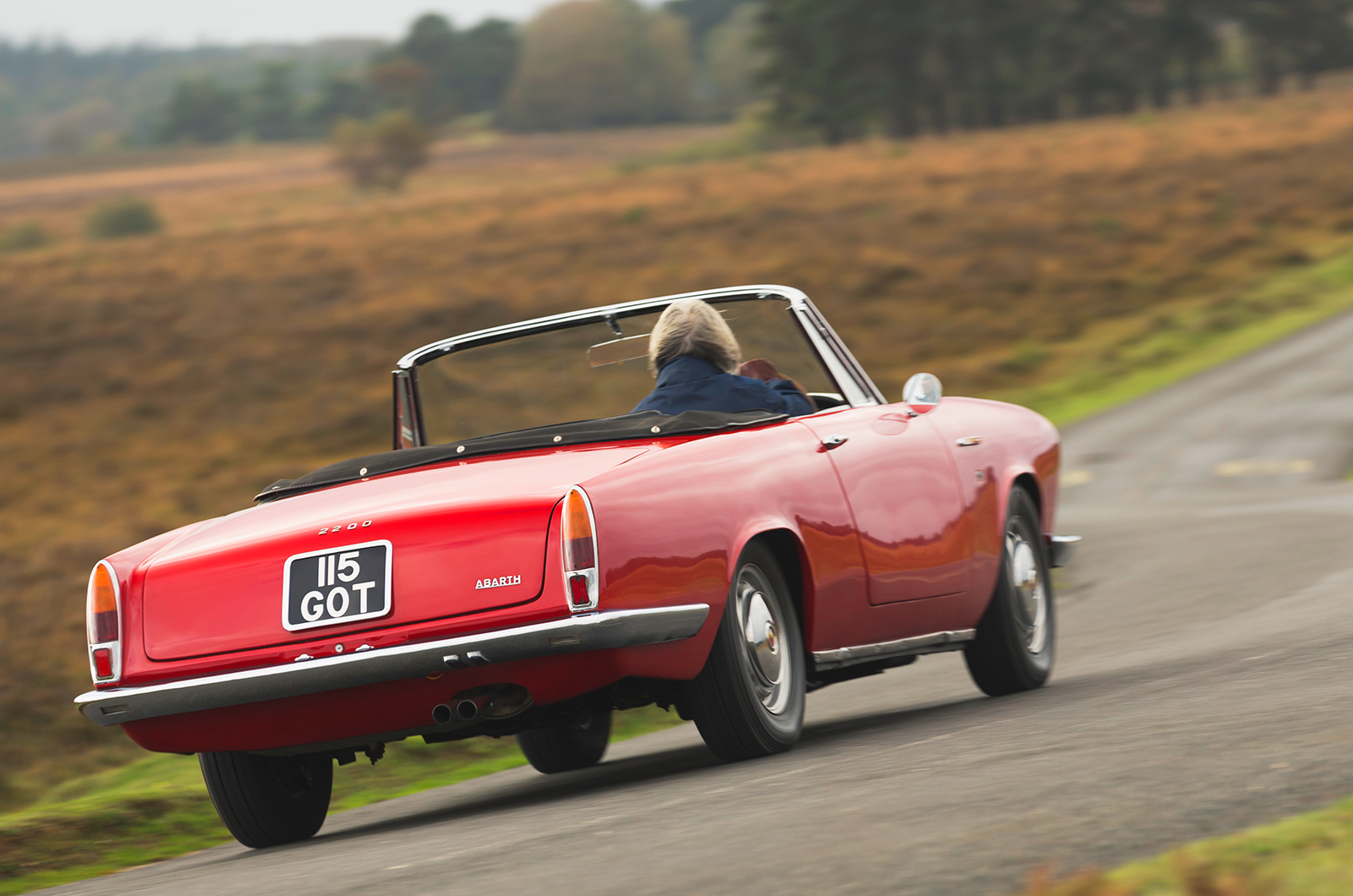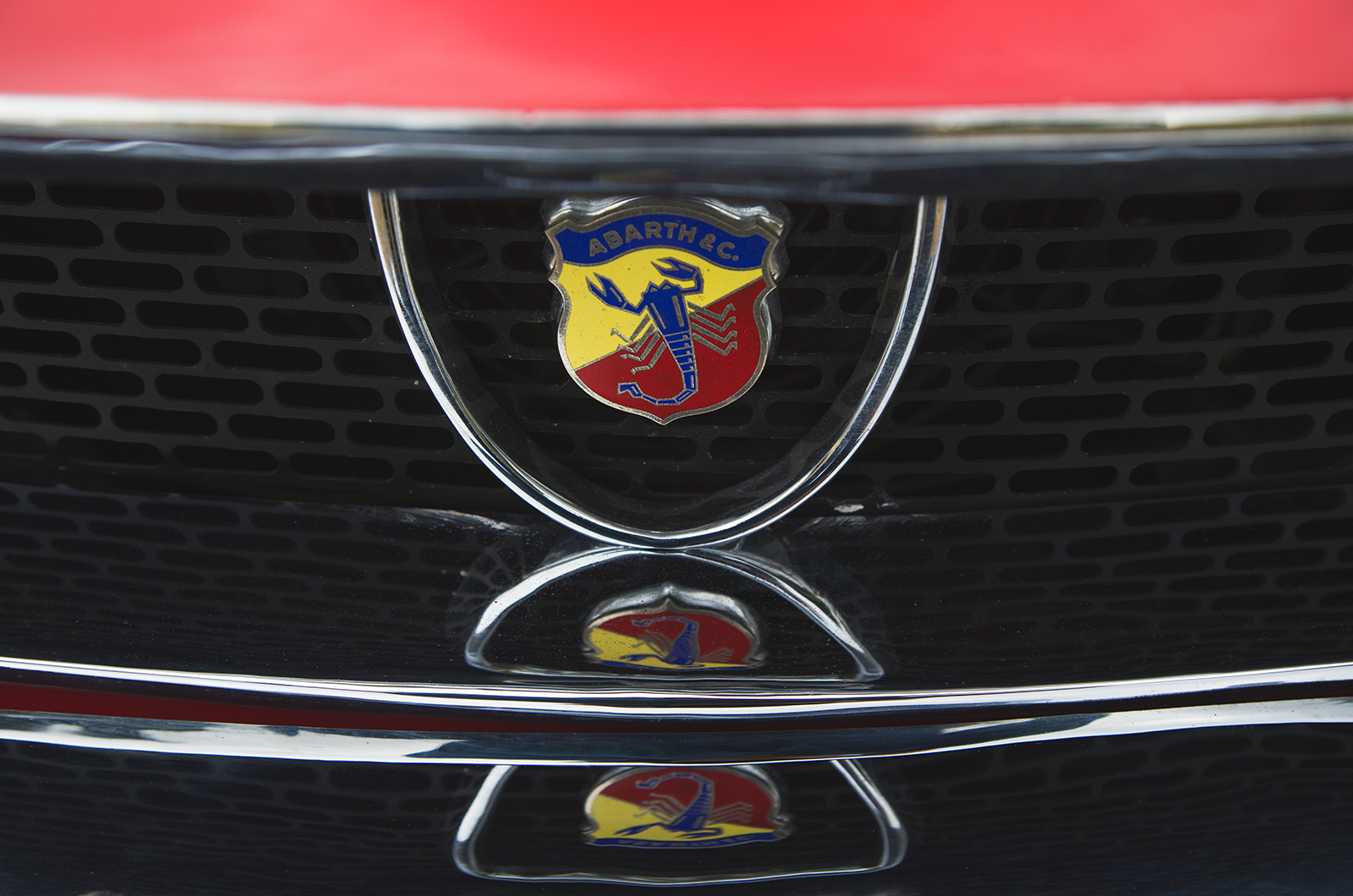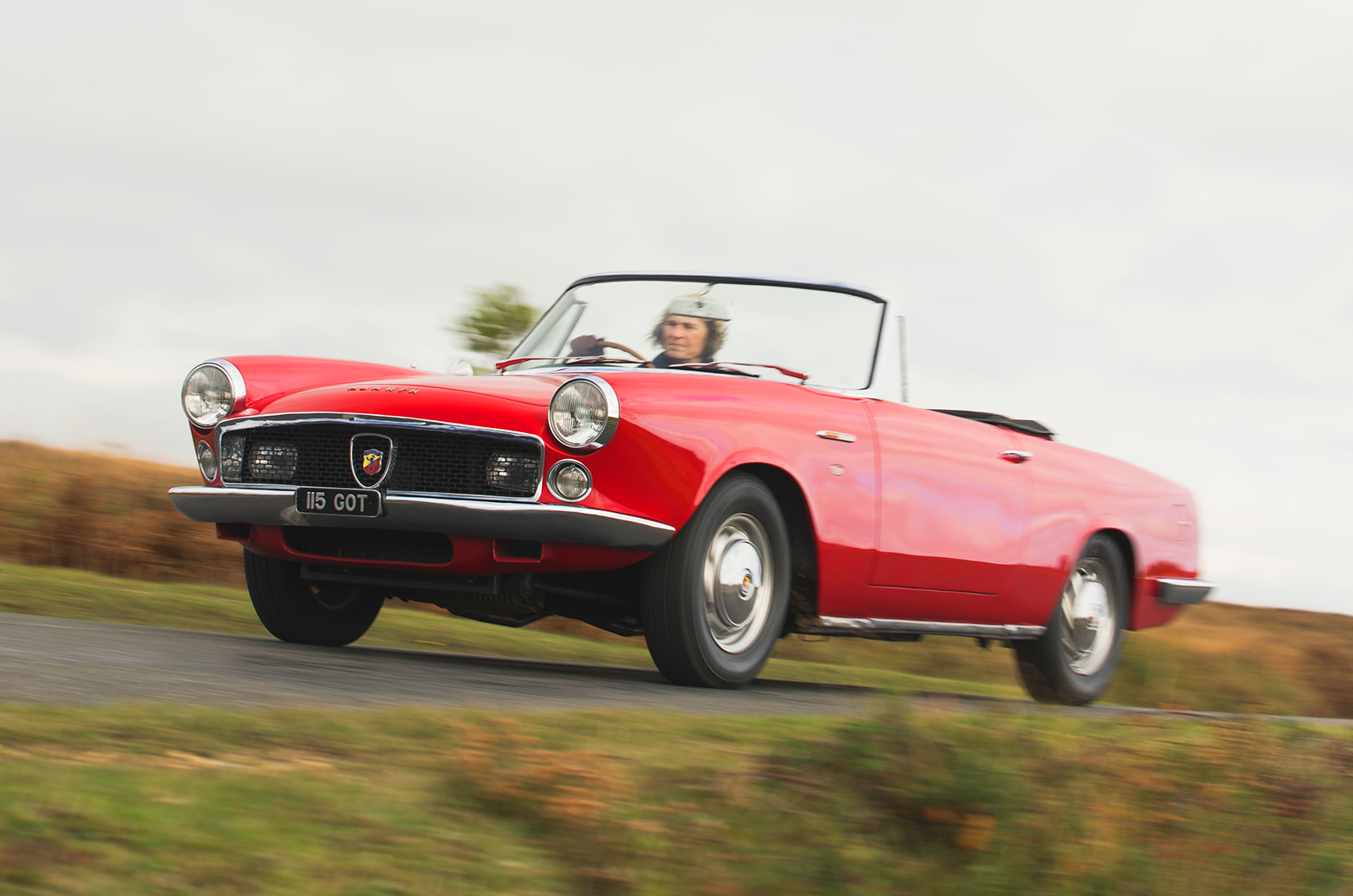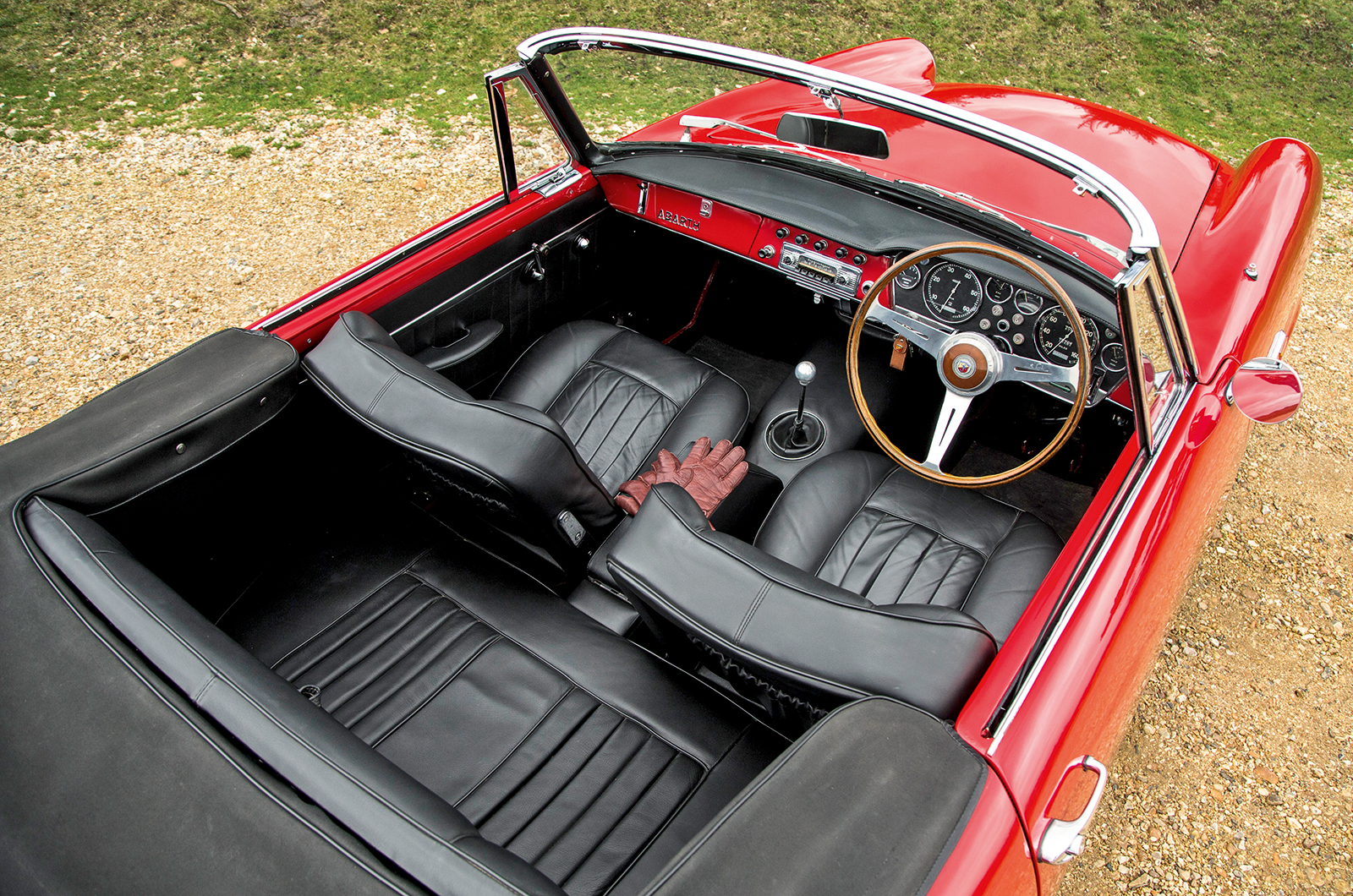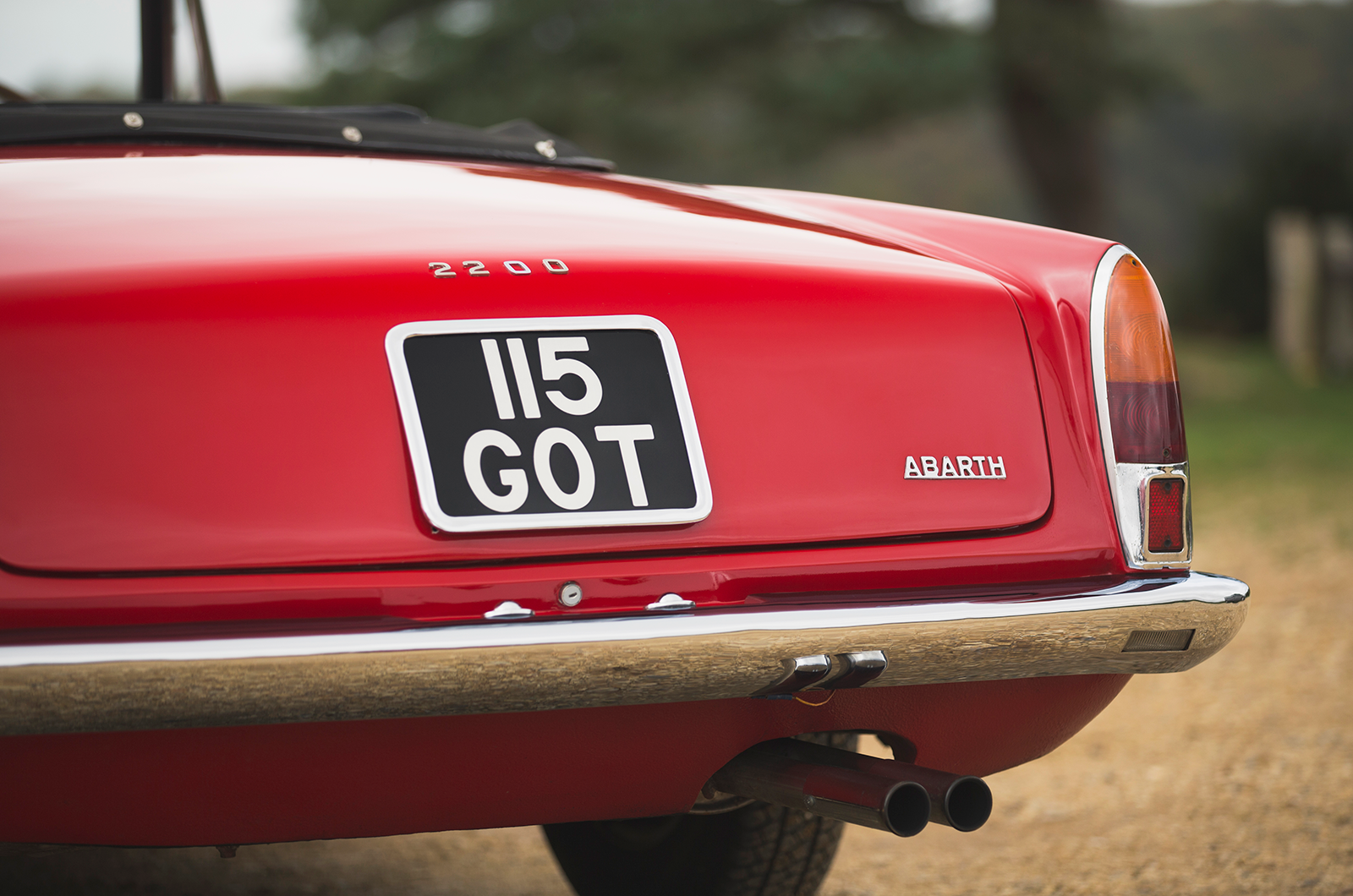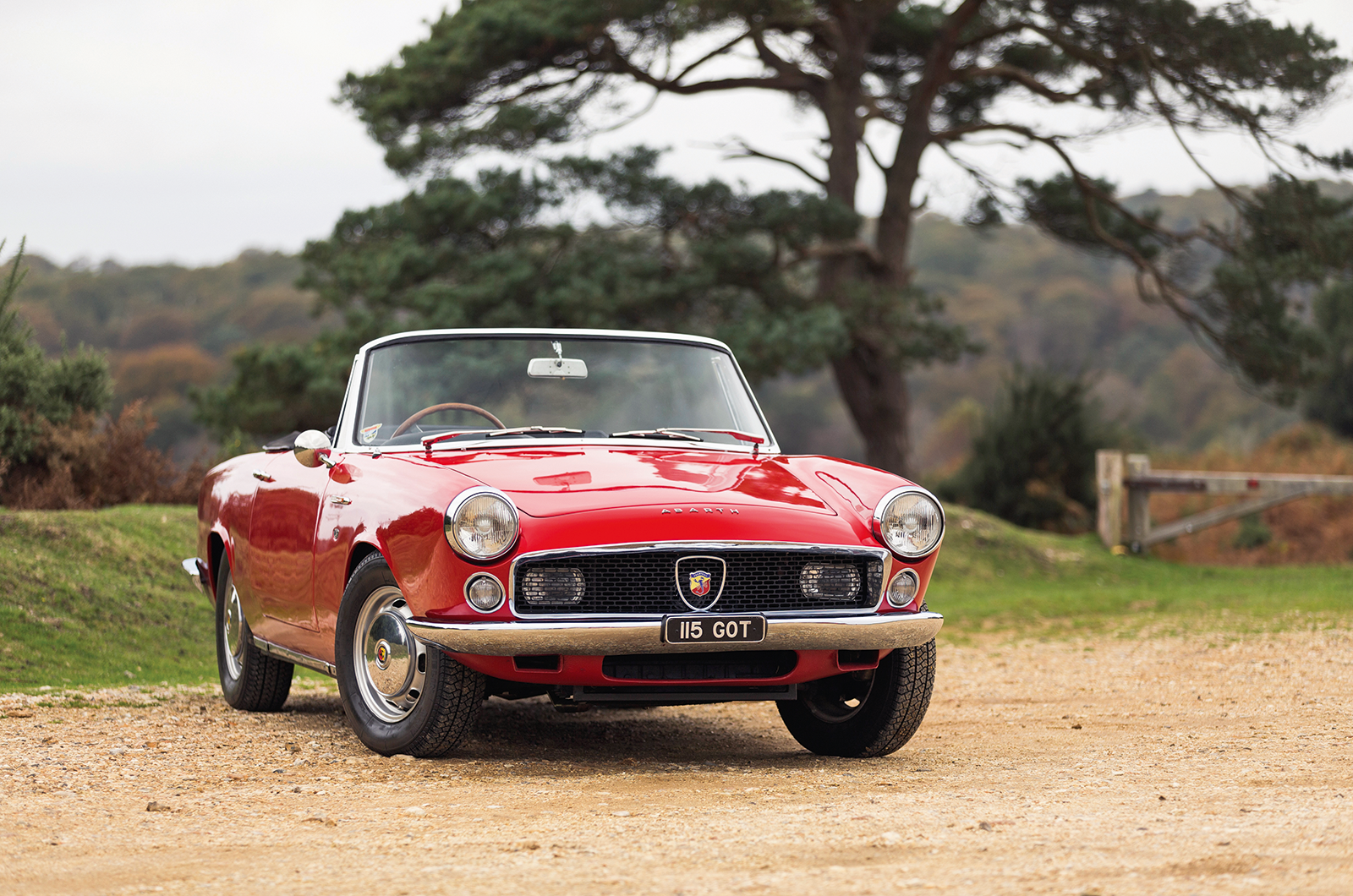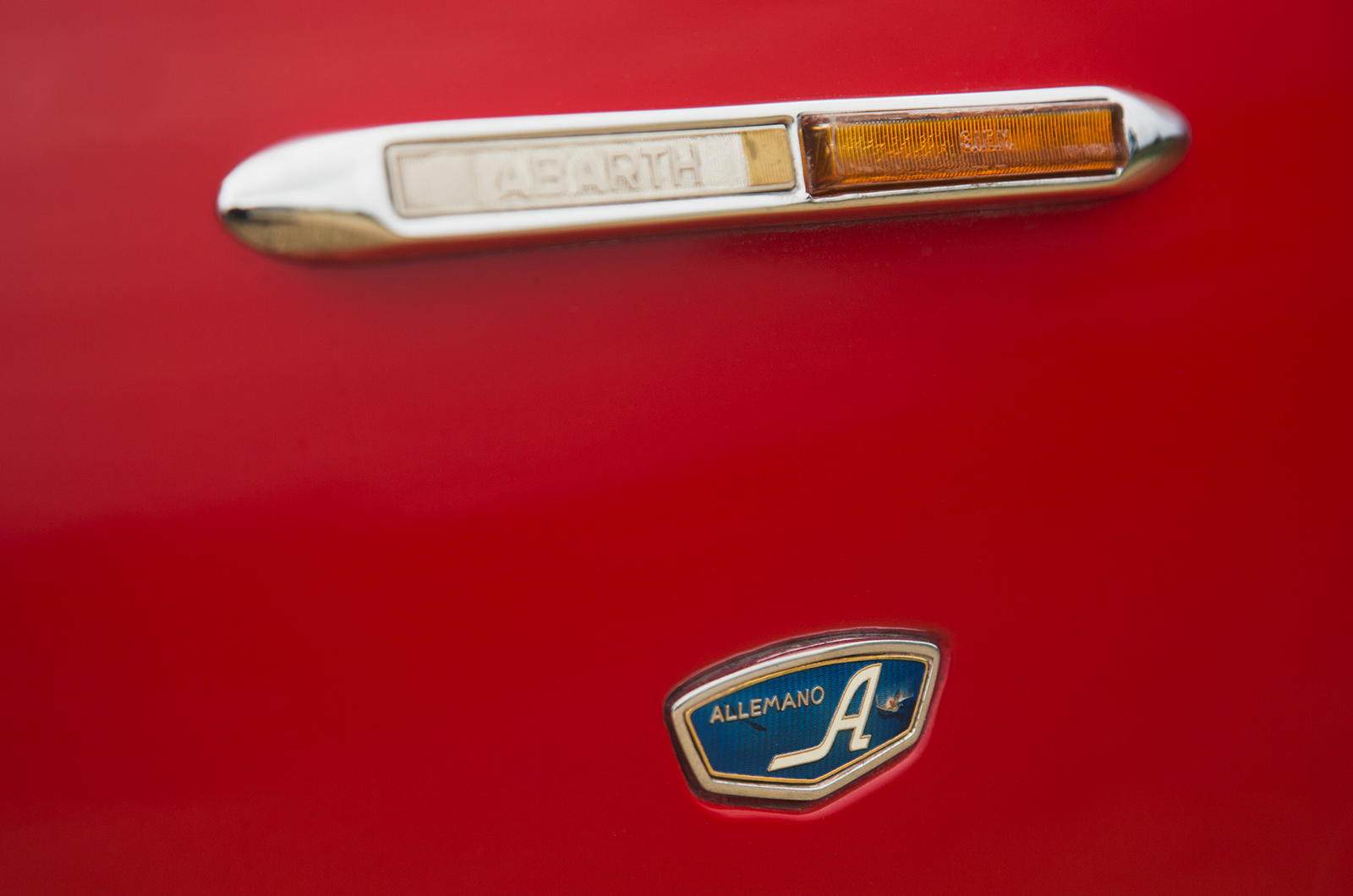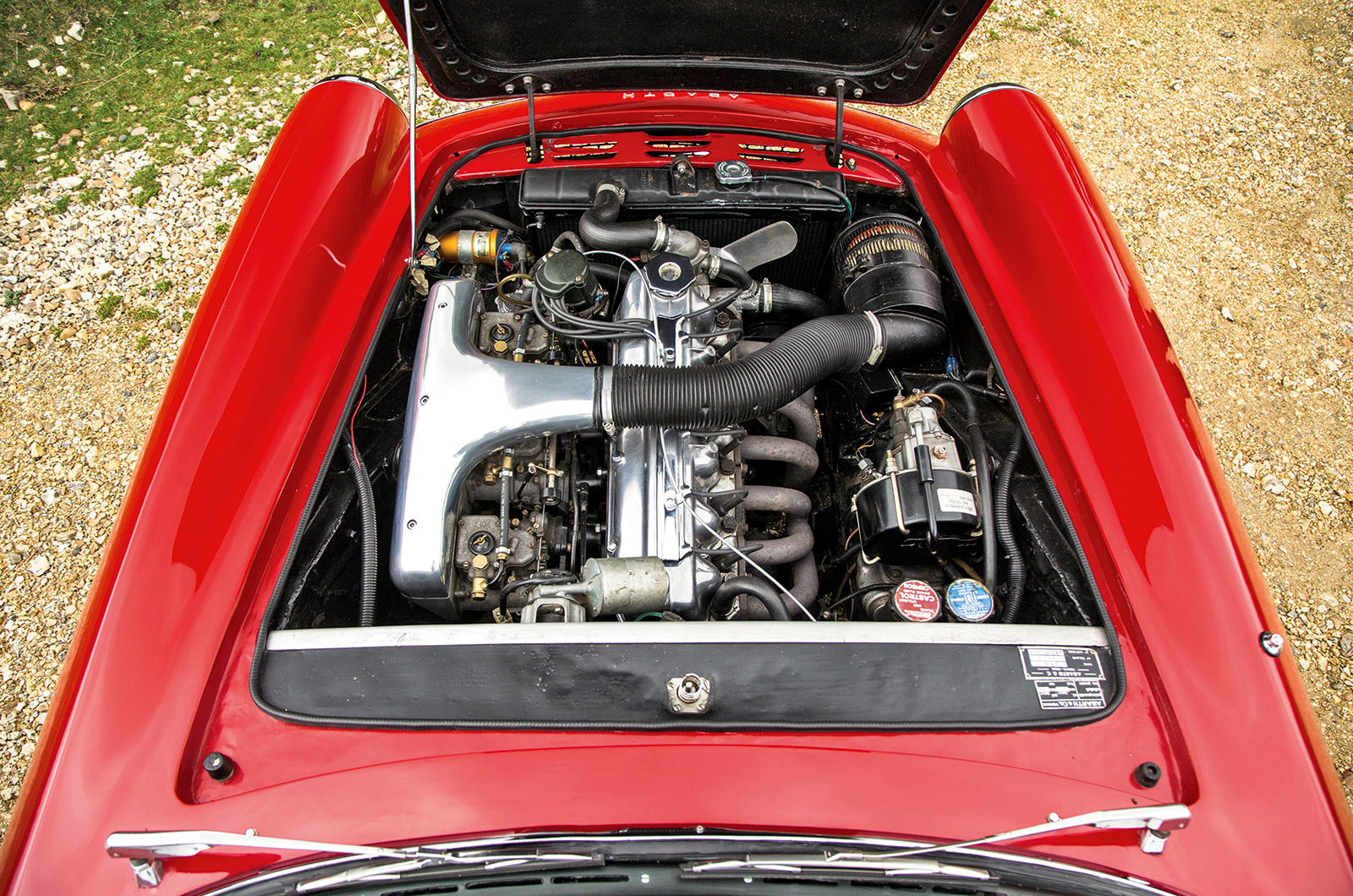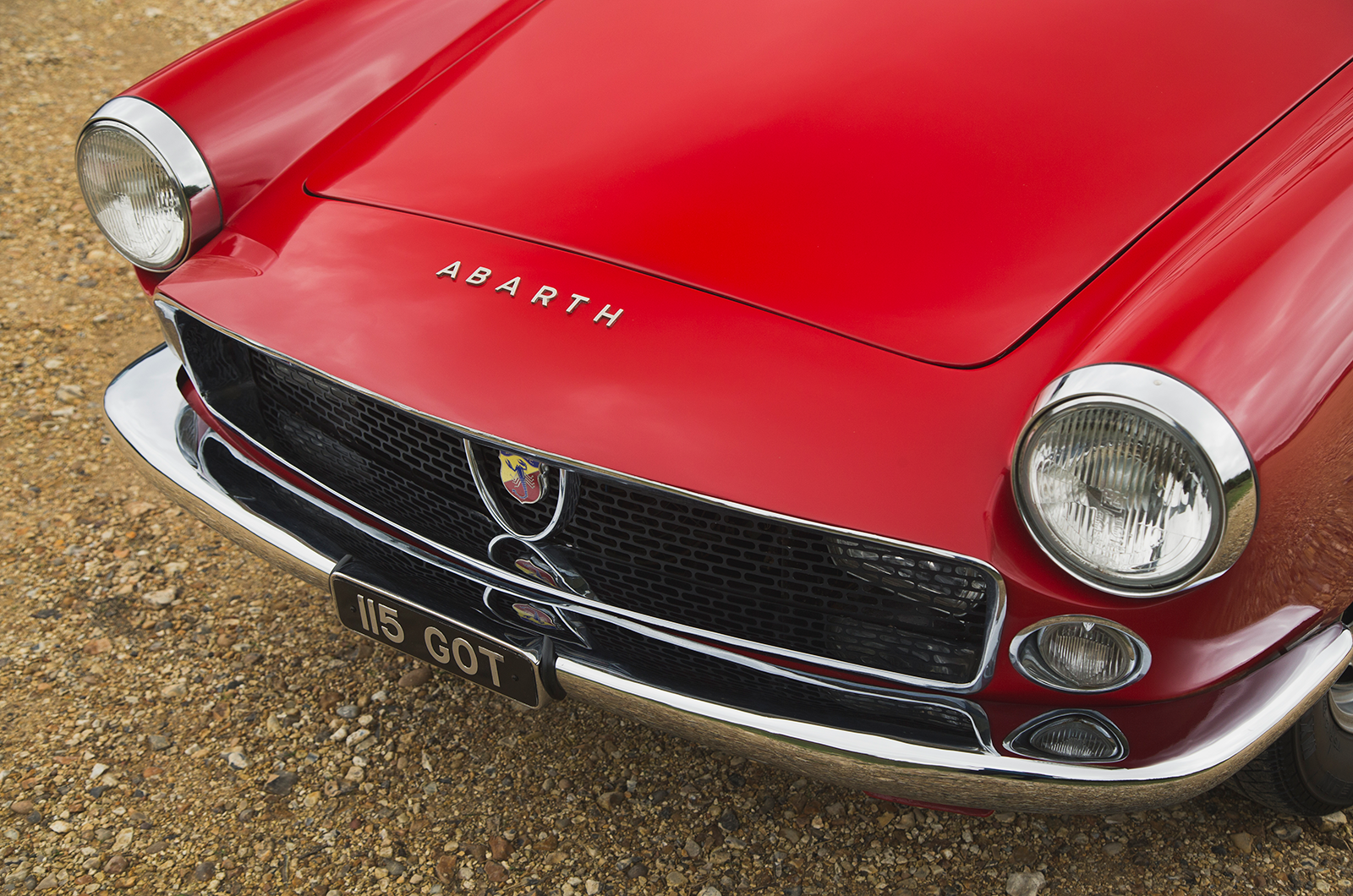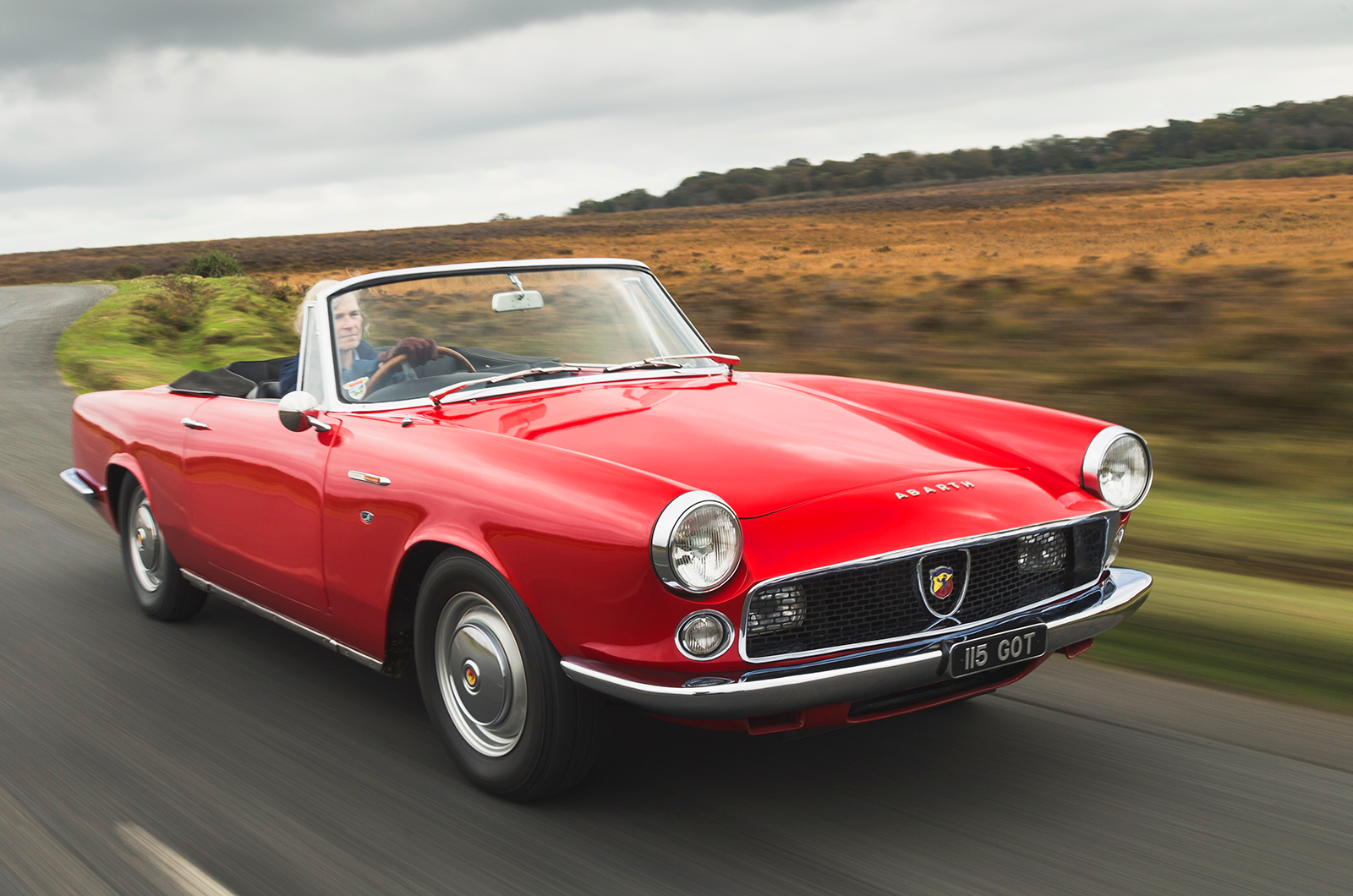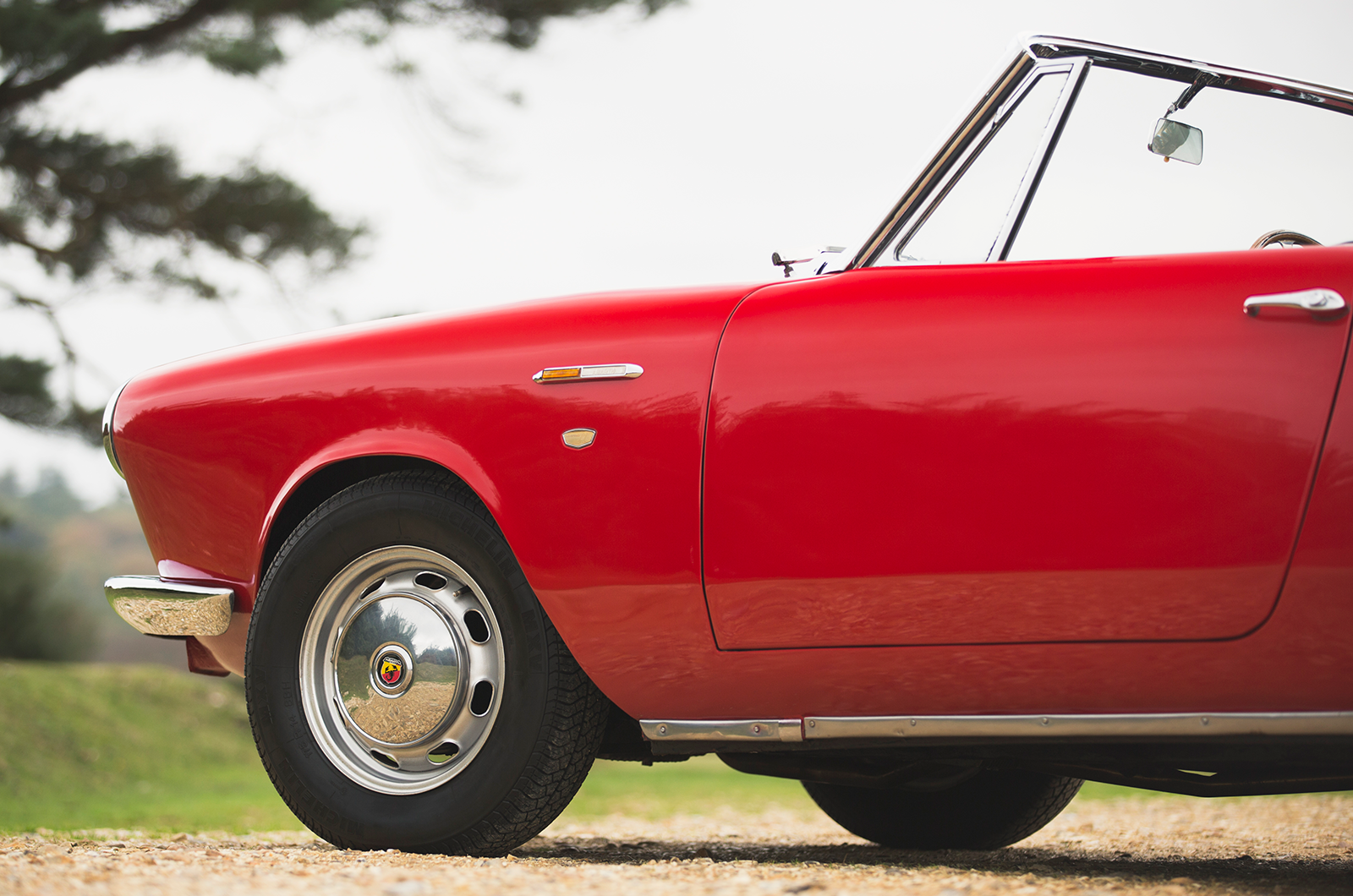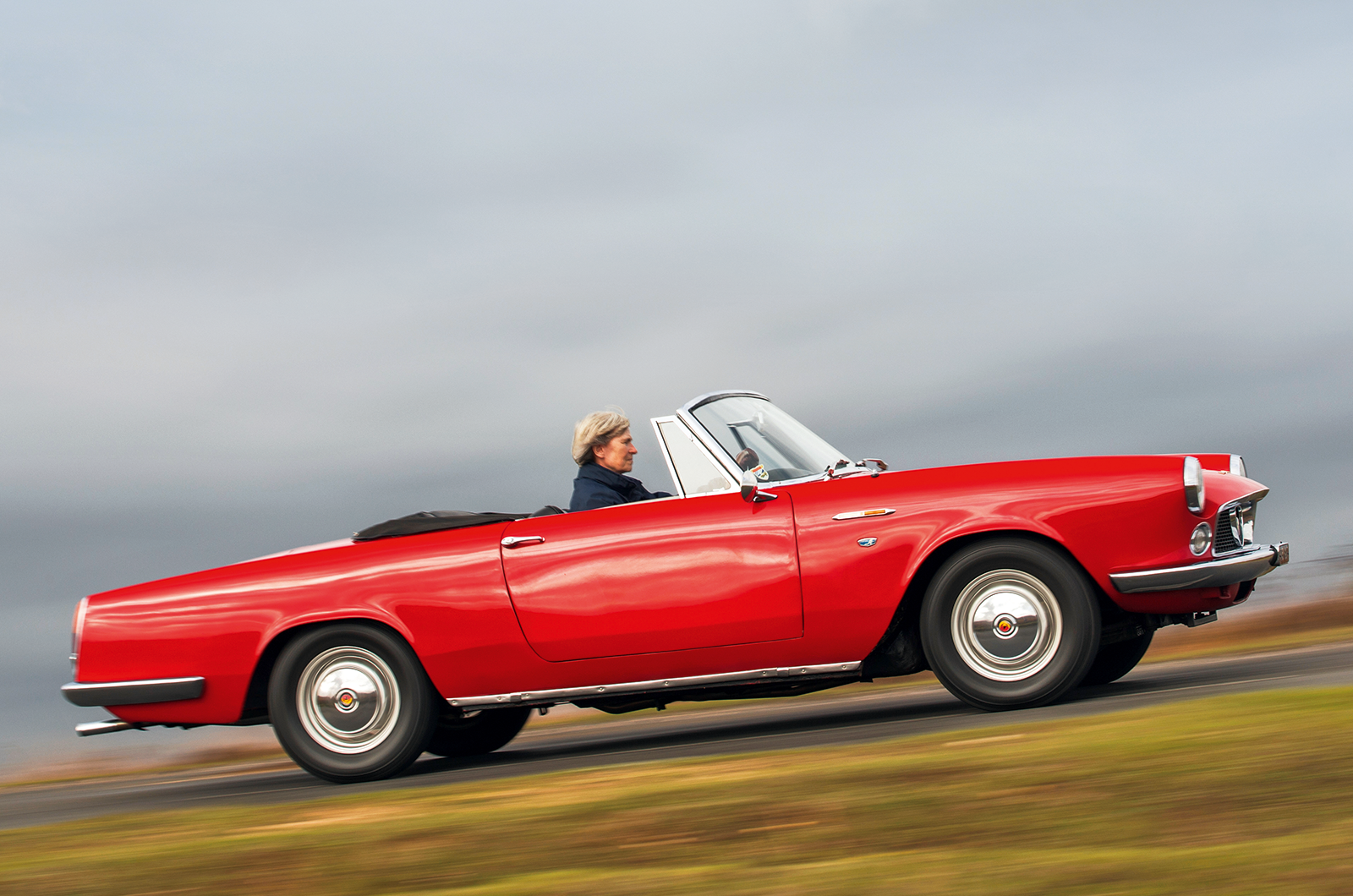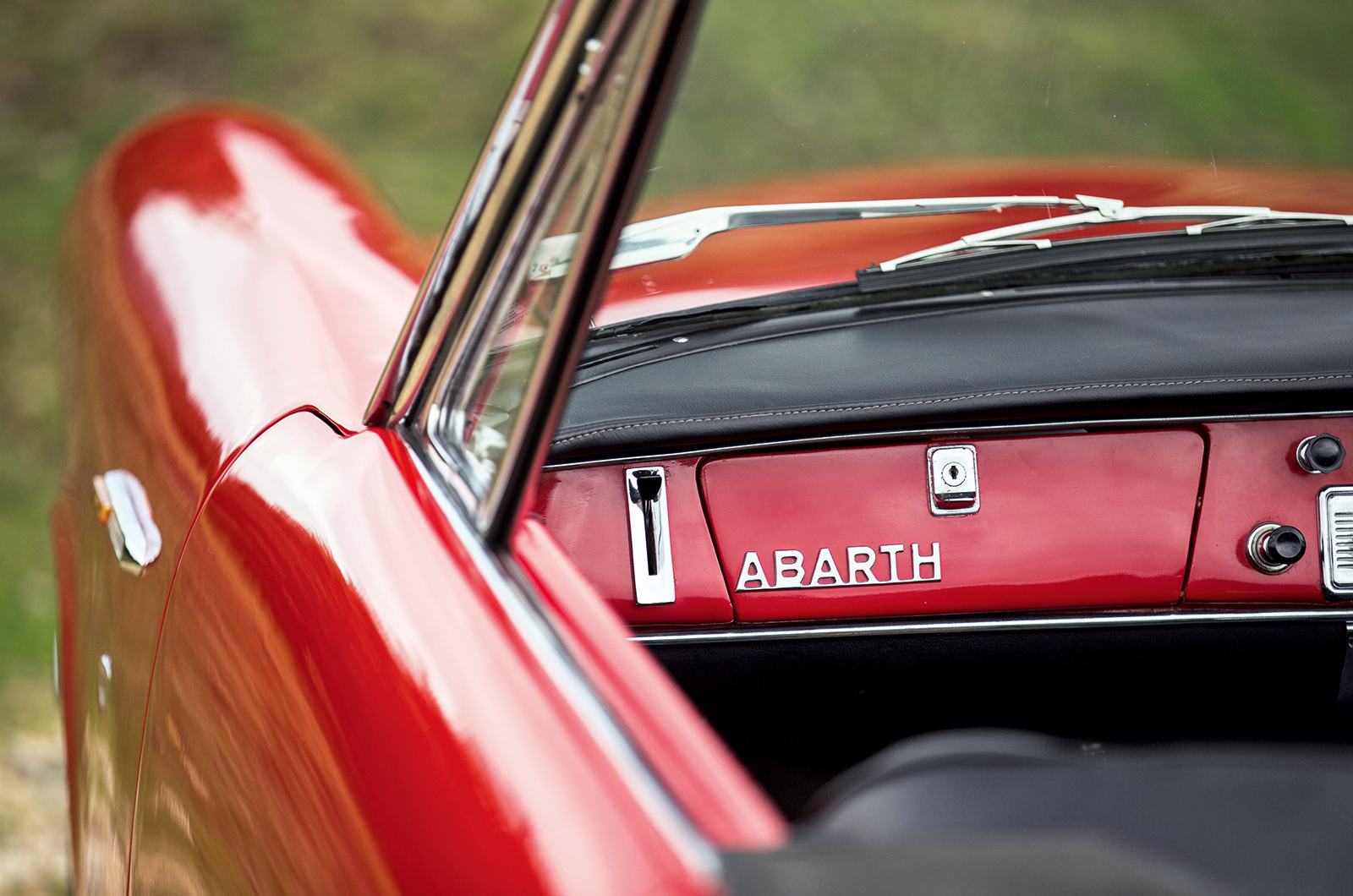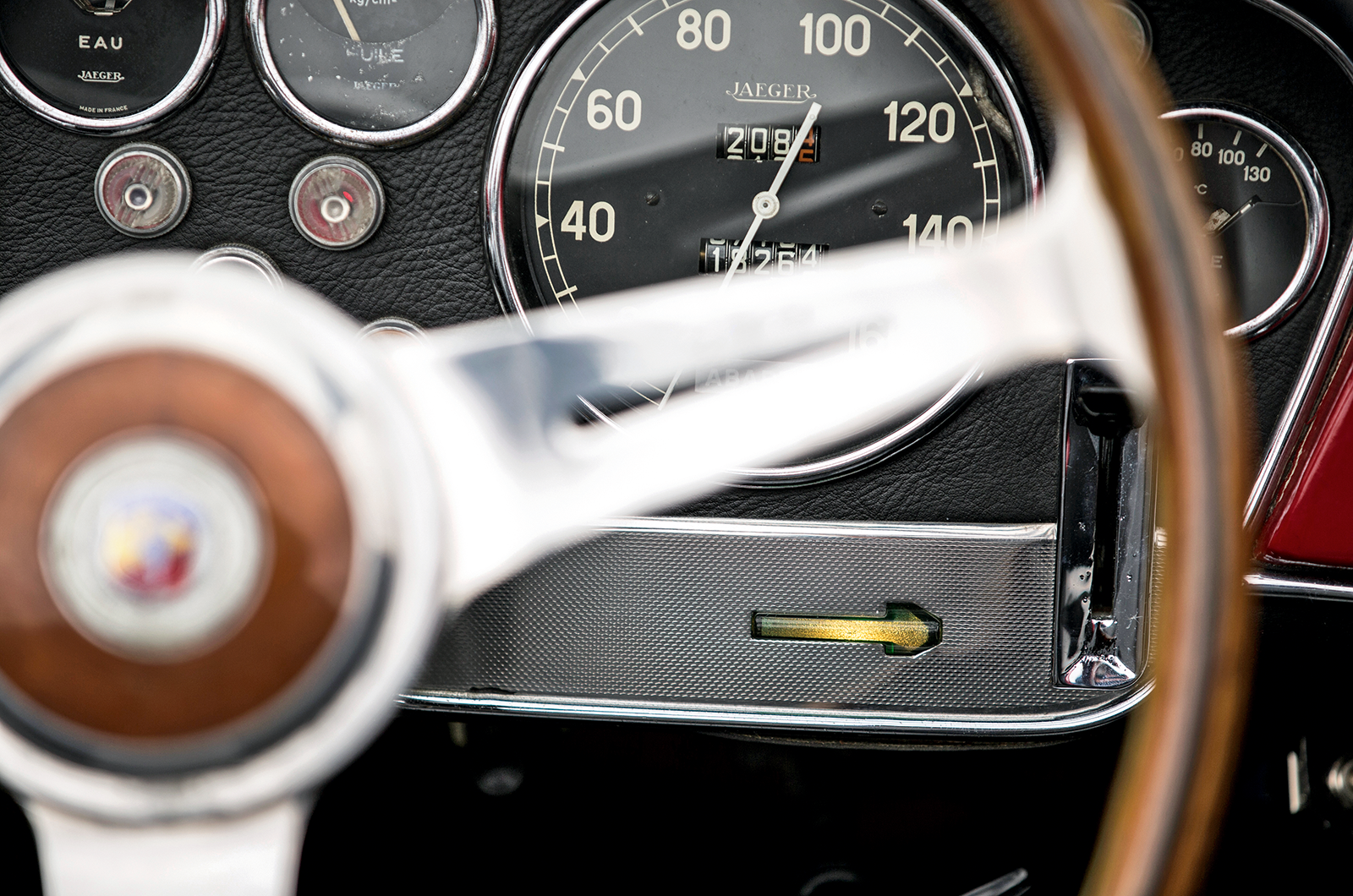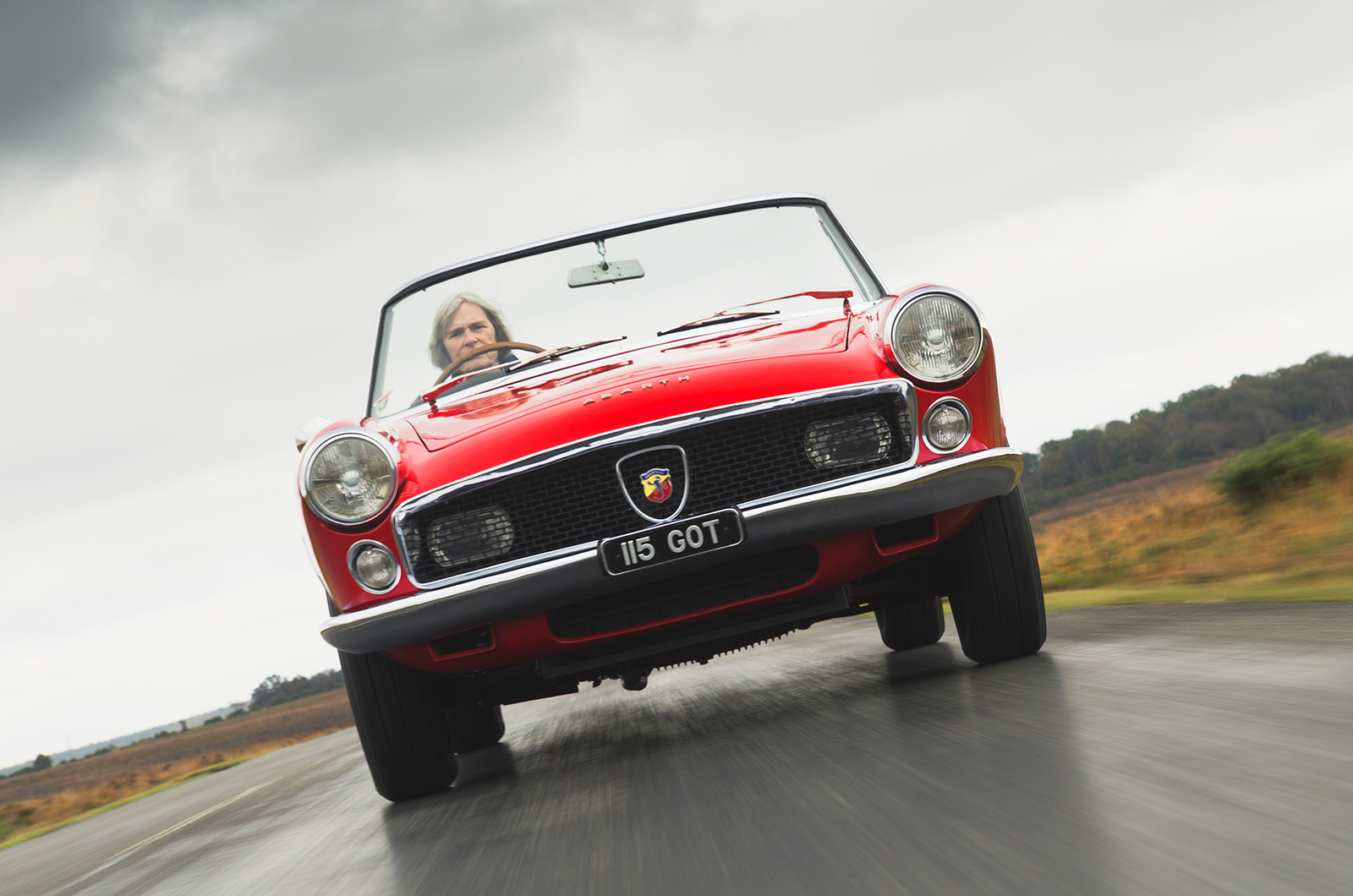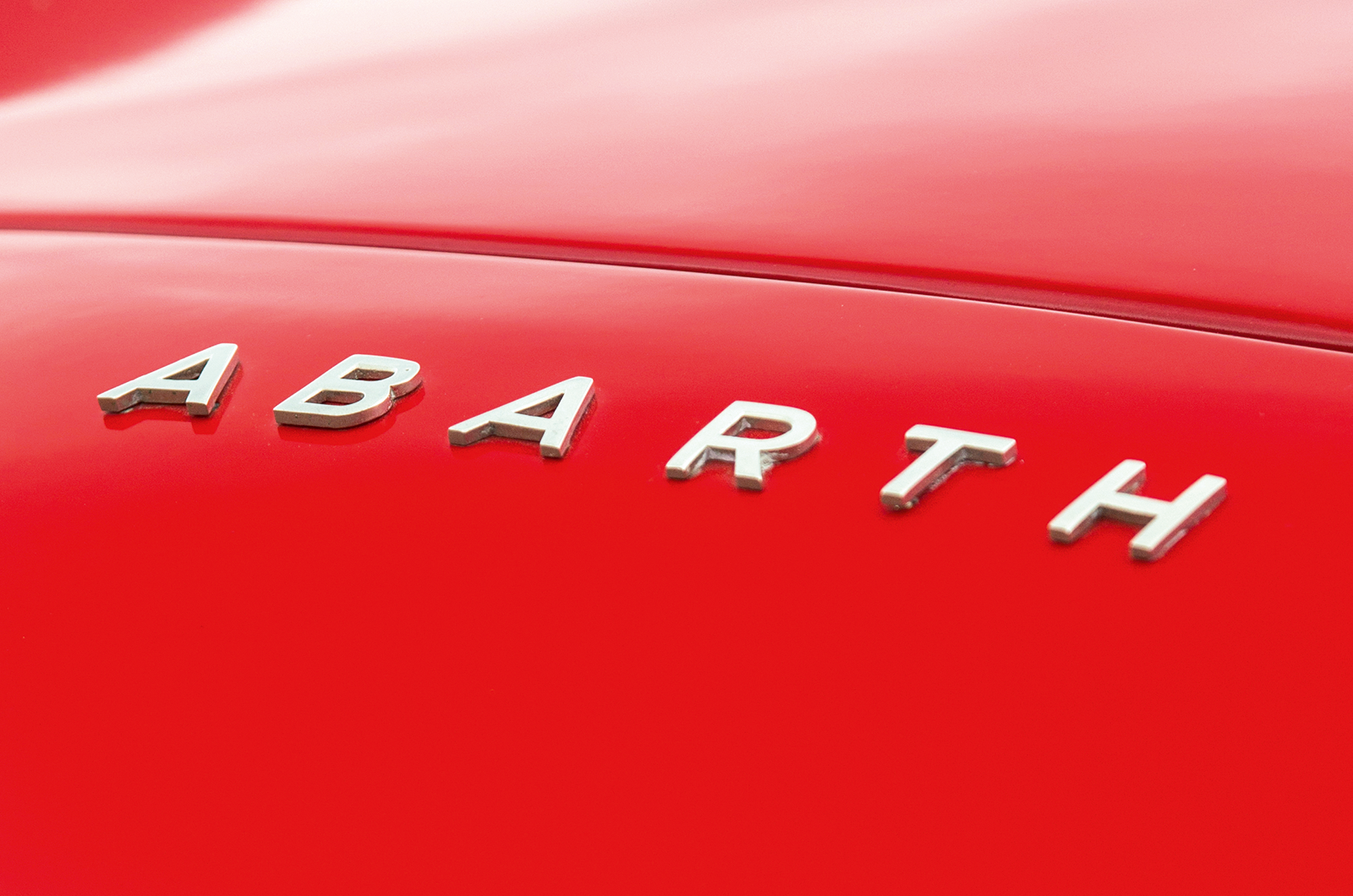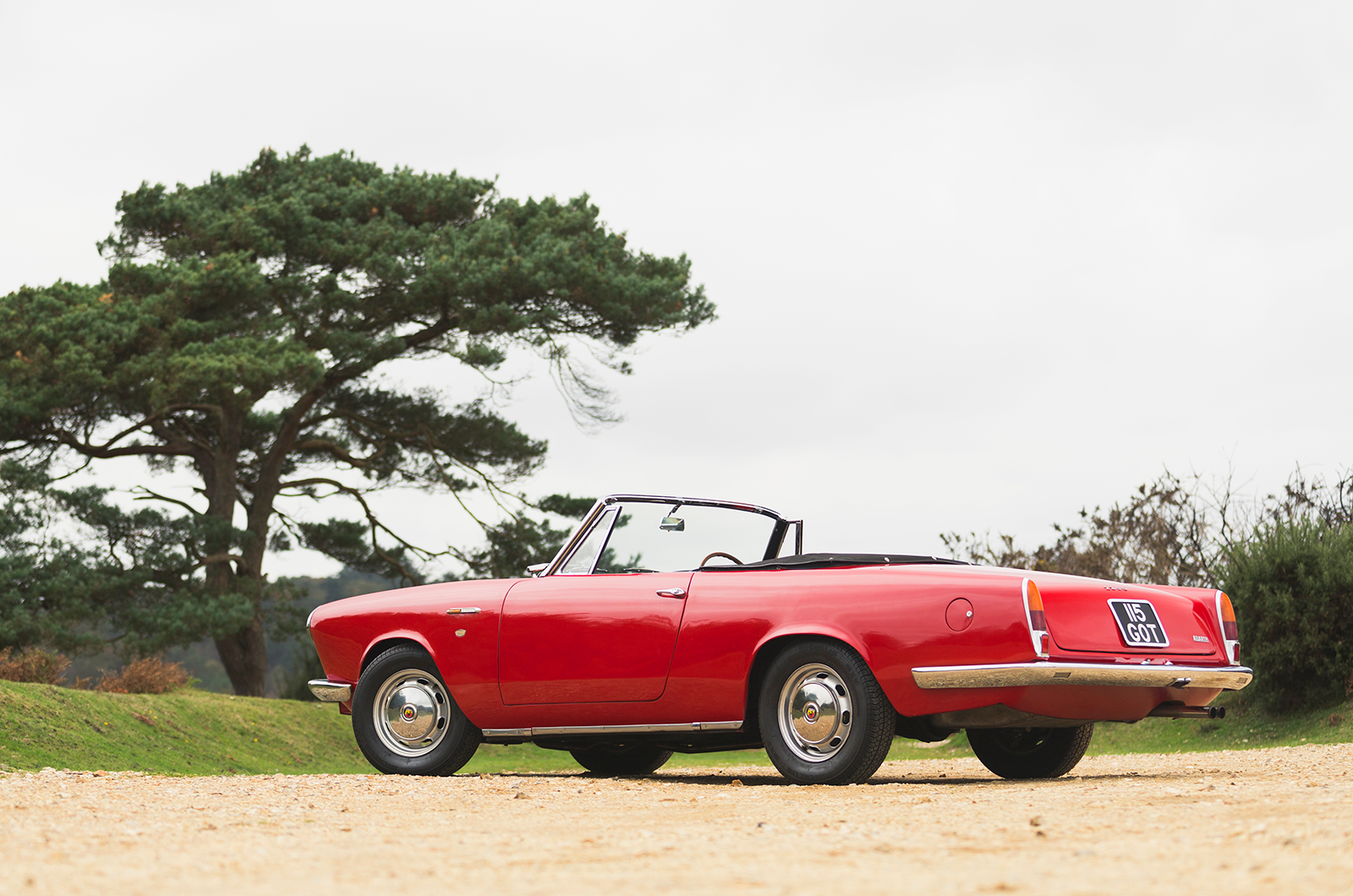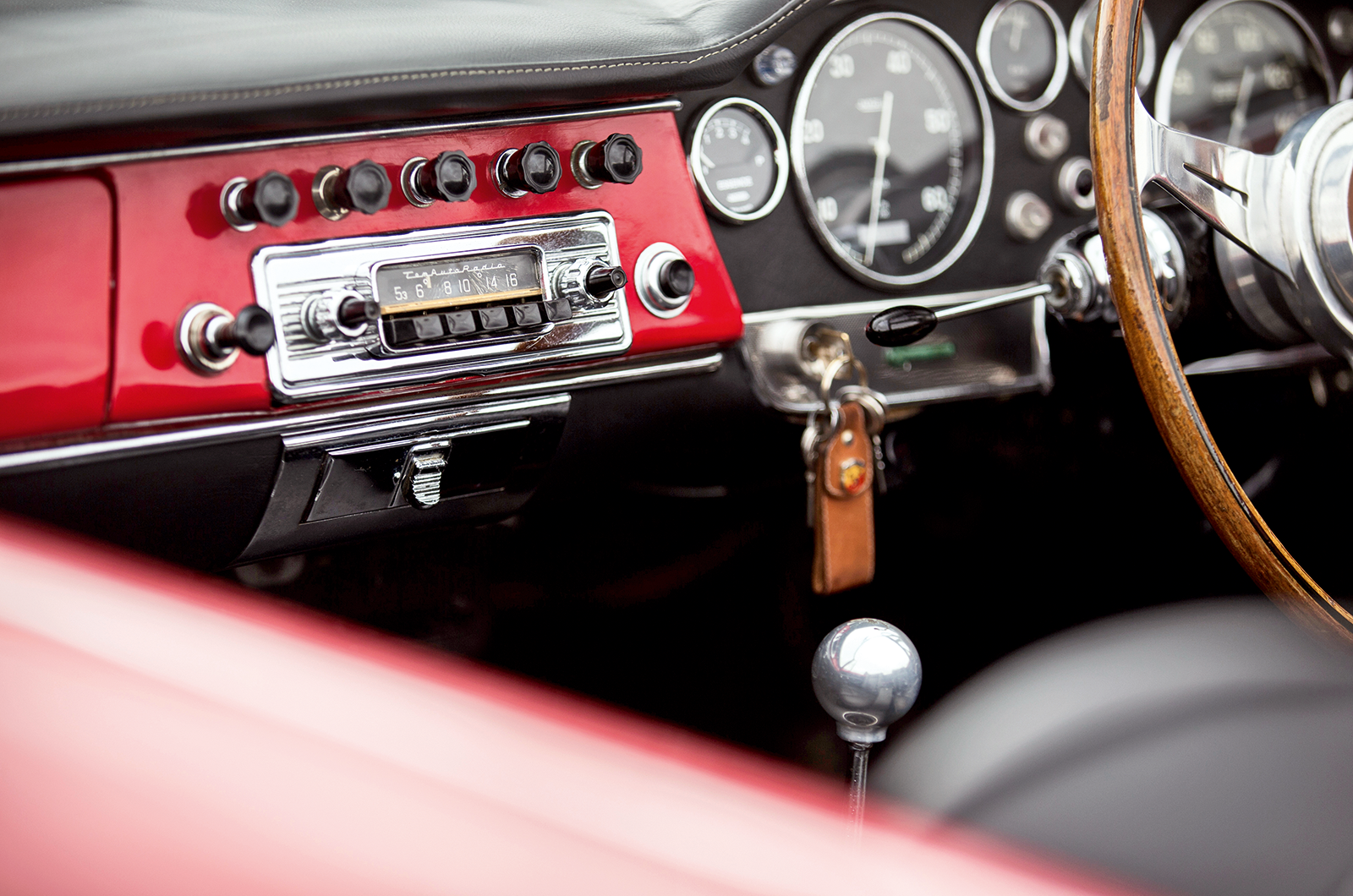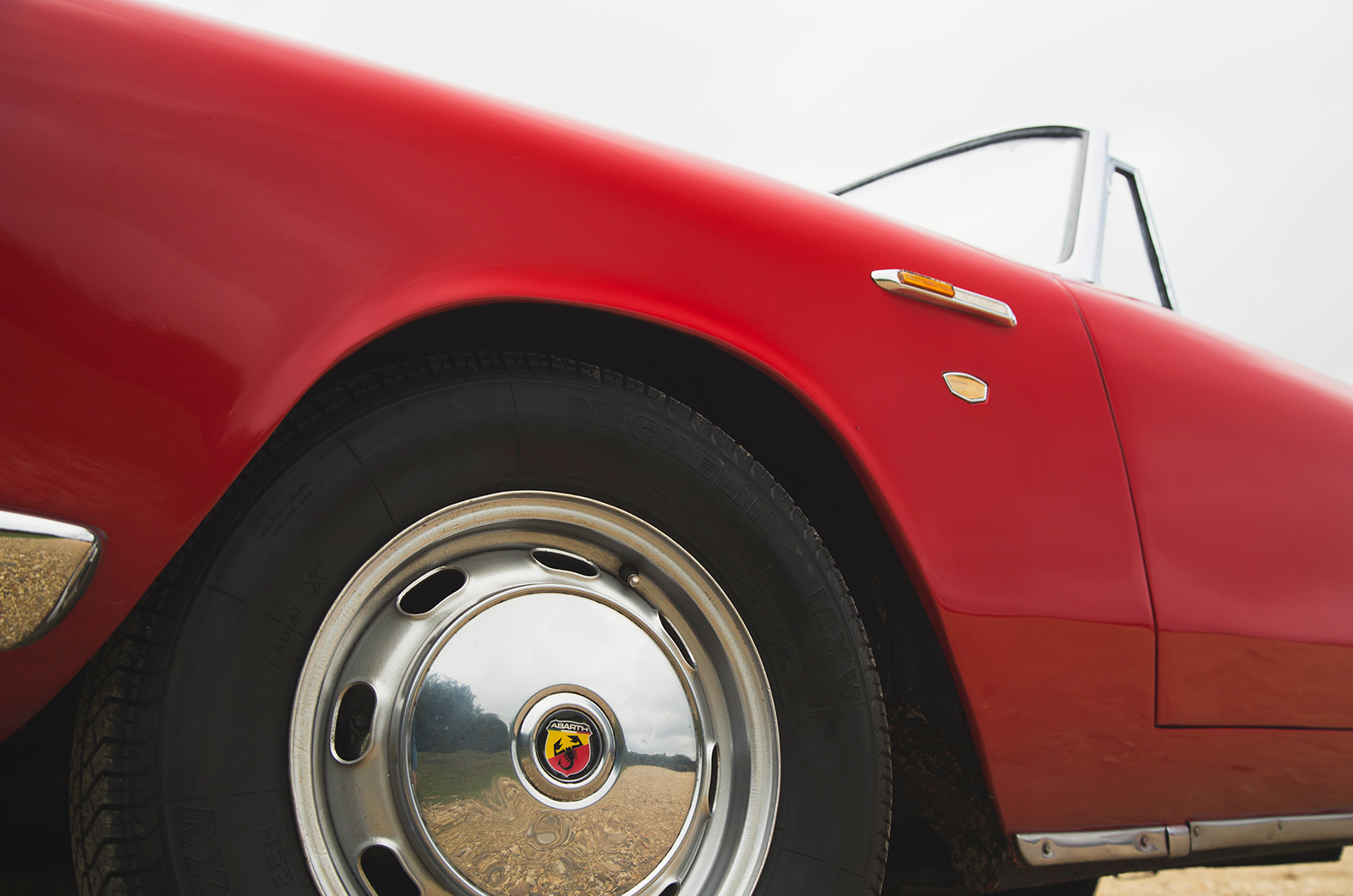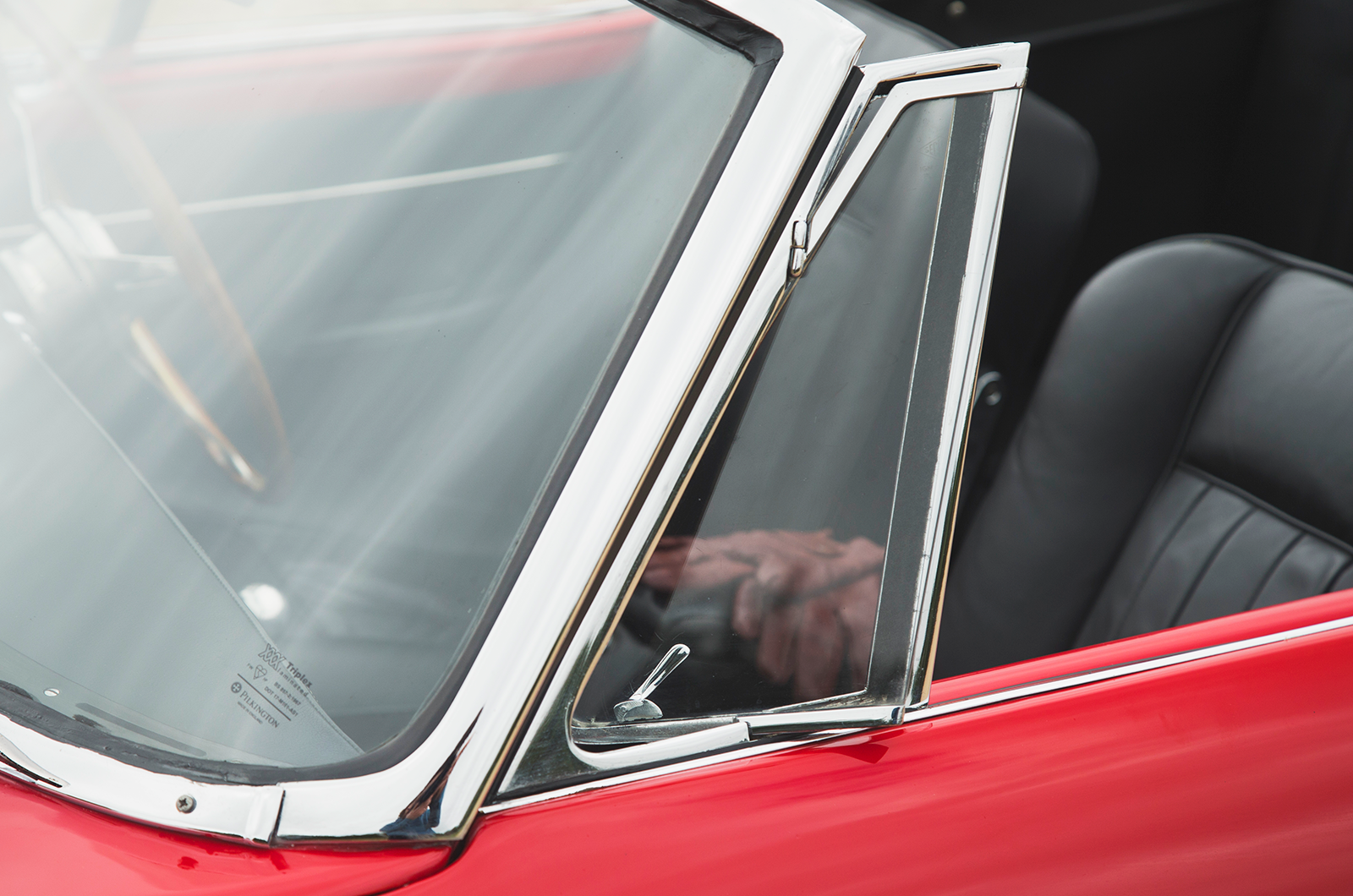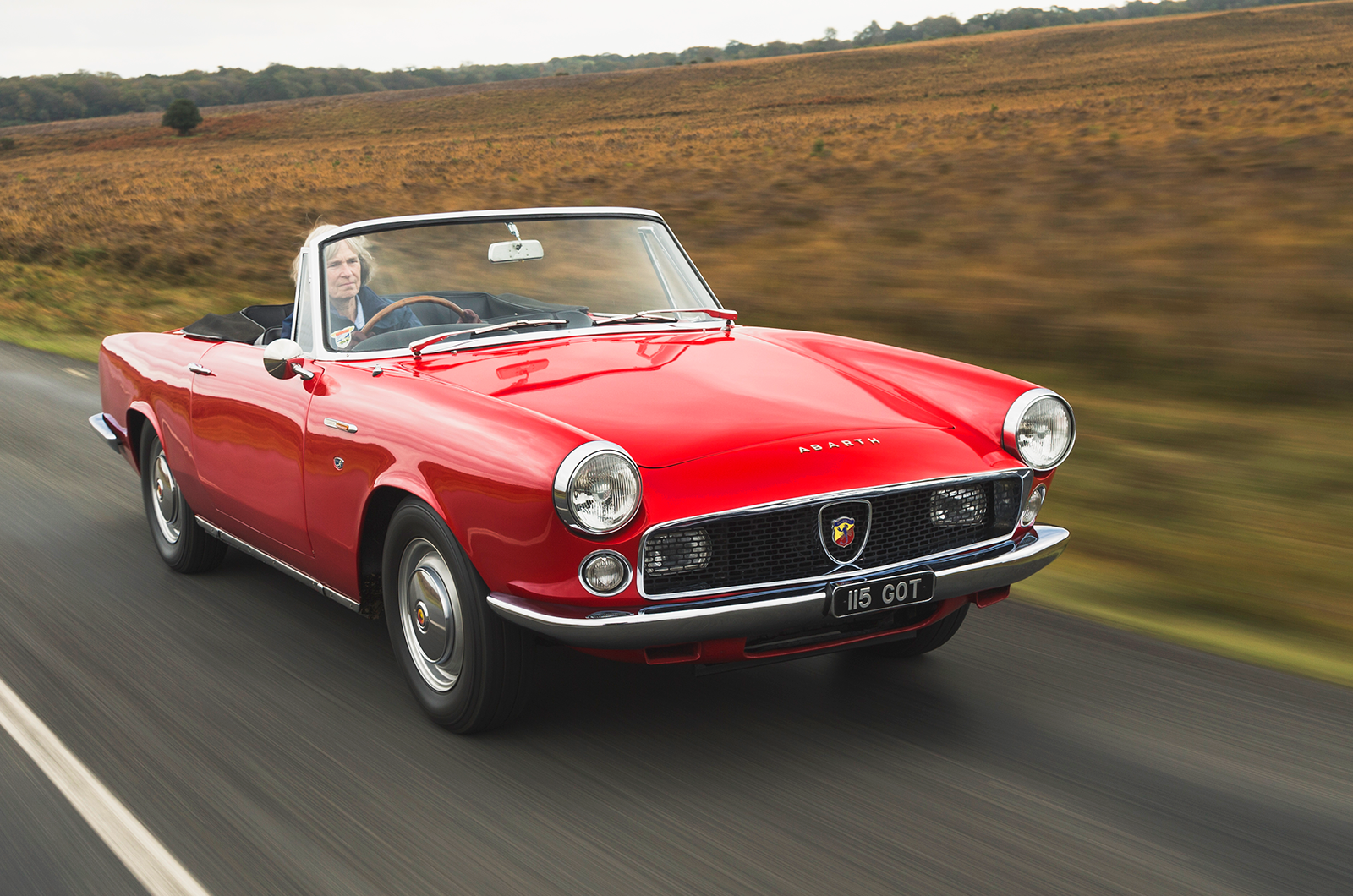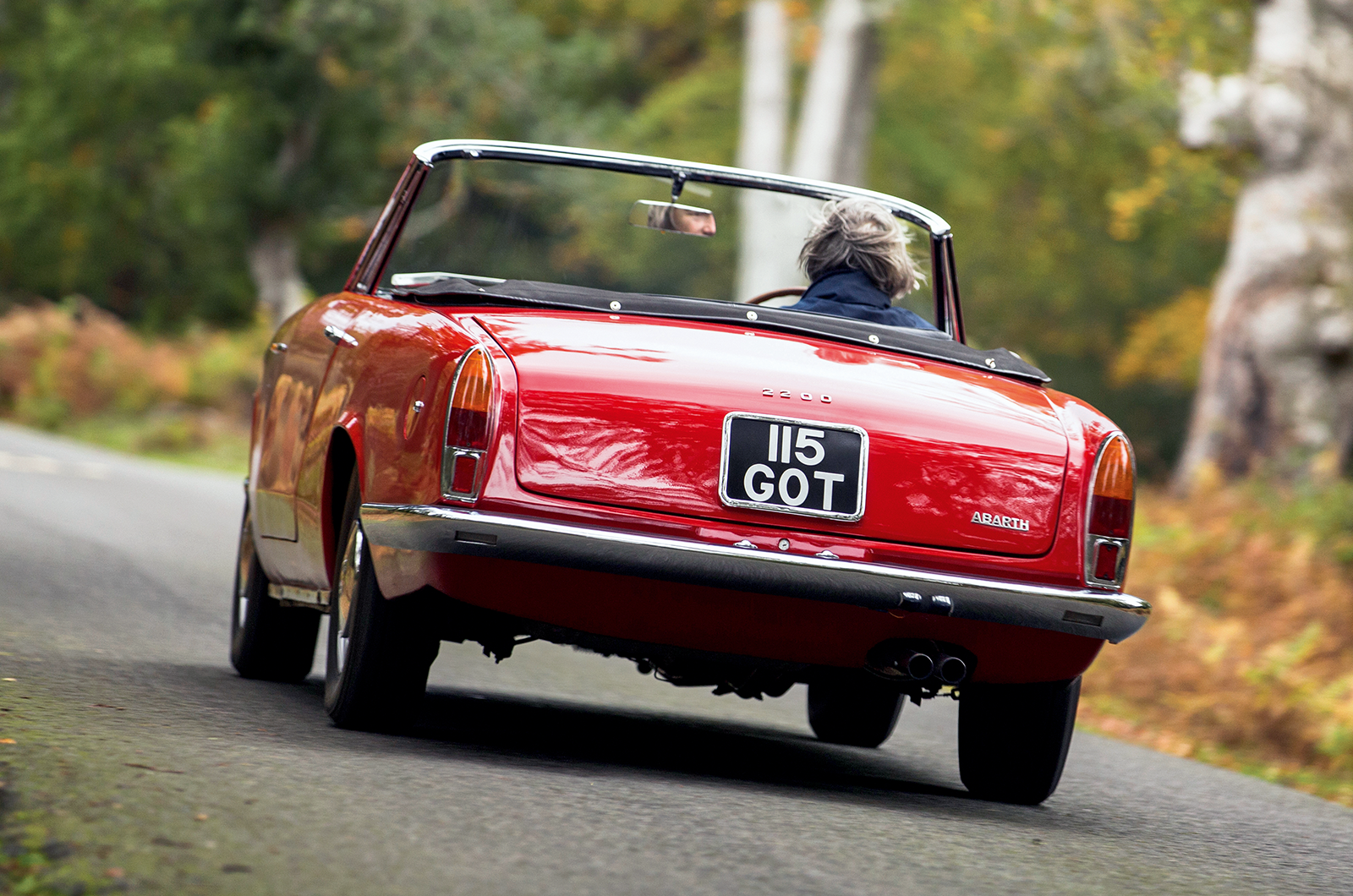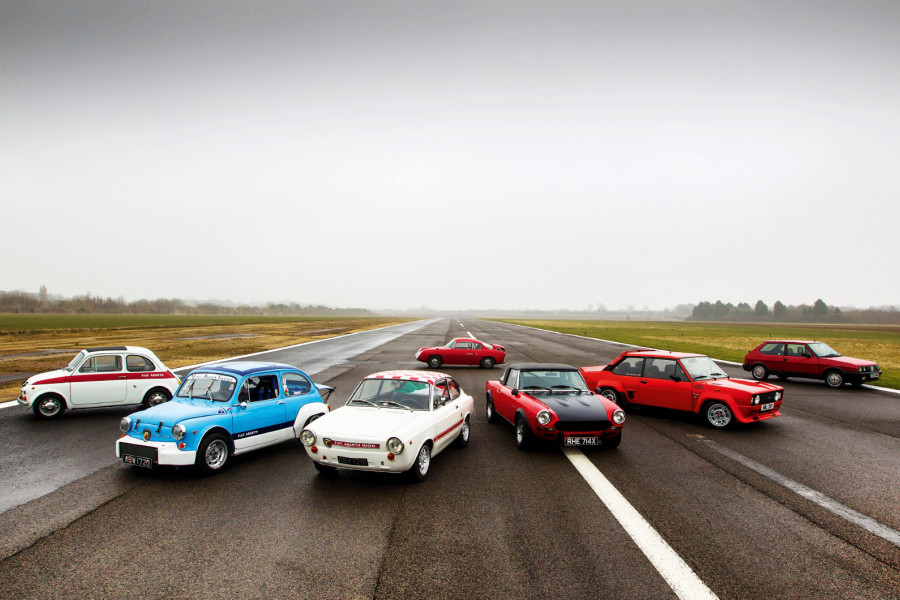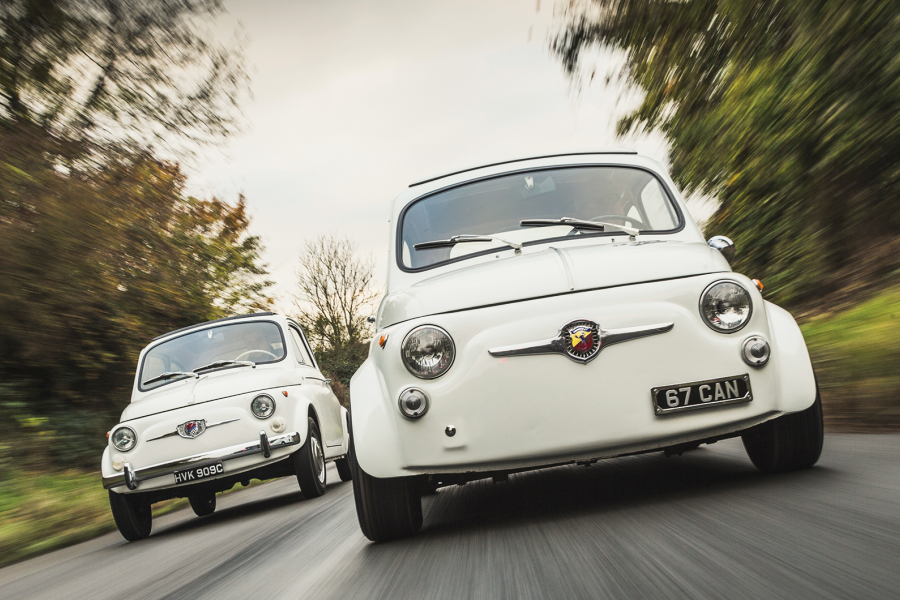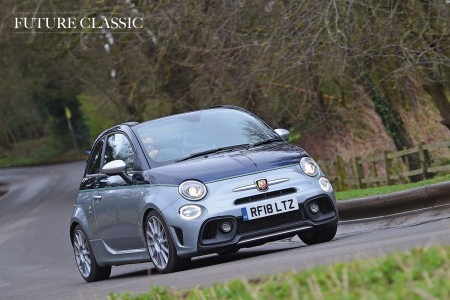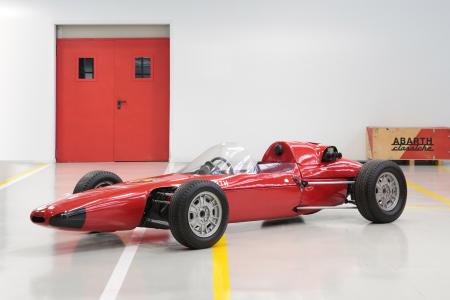The Spider was bought by its present custodians, Sara and Bill Billett, in 2006.
They have since rendered the Abarth period-correct, substituting narrow steel wheels (with chrome hubcaps) in place of the Fiat 130 alloys that were on the car when purchased.
The Spider has been garlanded in concours events, but it is every inch a driver.
It gets used, and it shows.
It is not known how many of these were built, but 30 of all types is thought to be about right – making this classic a rarity
What photos don’t lend is a sense of scale: this might be big by Abarth standards, but it appears positively dainty beside modern cars.
It is also pretty, as is to be expected, but free from the sort of styling tinsel familiar to the period.
There’s little in the way of chrome adornment. Step aboard and the body-coloured fascia is fronted by a vast Nardi wheel.
The detailing is exquisite, not least the groovy arrow-shaped indicator flashers (they’re Fiat items).
The chromed Tom Auto Radio
Then there are the Bakelite controls and the glitzy radio. The Jaeger speedometer’s top reading of 170mph is a touch fanciful, though.
Flanking it is a rev counter that reads to 7000rpm, with smaller gauges clustered around them.
You sit perched atop the leather-clad (originally vinyl) seat, with the pedals sprouting out of the floor and the willowy gearlever ideally sited.
Given Abarth’s bread-and-butter activities centred around exhaust systems, it shouldn’t come as too great a surprise that the 2200 Spider sounds the part.
By Abarth standards, this is a big car, but in reality it is still dainty
The engine is rooted in a mainstream unit but, when pressed, it emits a thoroughbred growl overlaid with induction roar.
It is the antithesis of your typical Abarth in that it isn’t the least bit hurried.
The straight-six is reasonably torquey (there’s 130lb ft of the good stuff at 3800rpm if the brochure is to be believed), and it weighs 1090kg (2403lb) so there’s relatively little heft.
As such, it picks up momentum with minimal drama. According to the factory figures, the Spider was capable of 0-60mph in 9 secs, going on to 123mph outright.
This classic Abarth has been with its current custodians since 2006
That seems a little hopeful, but it is certainly brisk.
The gearchange is an unanticipated delight, too. It is well defined between planes, with a relatively short throw across the gate and it snicks into each ratio remarkably quickly. This is the biggest surprise here, given the car’s vintage.
The worm-and-roller steering arrangement, in contrast, is very much of its era, but free from kickback or dead spots nonetheless.
Nor are there any tremors through the structure, which is not always a given with something coachbuilt in the ’60s.
The straight-six gives the Abarth 130lb ft of torque at 3800rpm
This is patently not a car for testy switchbacks, but the Spider is in its element on flowing B-roads.
You expect it to be a bit ponderous, given its less-than-racy underpinnings, but instead the Abarth is relaxed and predictable.
The twin-coil-sprung live rear end absorbs the worst topographical nastiness on the straight-ahead, and it doesn’t get discombobulated should you encounter a bump mid-corner, either.
The brakes work well, even if the pedal requires a hefty shove.
The Abarth 2200’s silken engine and composed chassis can shine on roads like this
The Abarth badge here is befitting: the 2200 feels special.
What this car has in spades is charm. It is much more than just a gussied-up Fiat, a reconfigured and beautified production car with some go-quicker bits chucked in.
It is, well, lovely. Yes, the 2200 didn’t make much of an impression in period, and as such it will always be a footnote in Abarth lore, but that’s the thing: it is a winner on its own terms.
The 2200 Spider is infinitely better than the sum of its parts, so it’s all the more of a shame, then, that it didn’t get to captivate a wider audience.
Images: Luc Lacey
READ MORE
Fiat’s final champion: Fiat-Abarth 131 Stradale
Going for it: Fiat Dino 2000 Coupé and 2300S Coupé
Pretty little things: Alfa Romeo Giulia Spider Veloce vs Fiat-Osca 1500S Cabriolet
Richard Heseltine
Richard Heseltine is a long-time contributor to Classic & Sports Car

